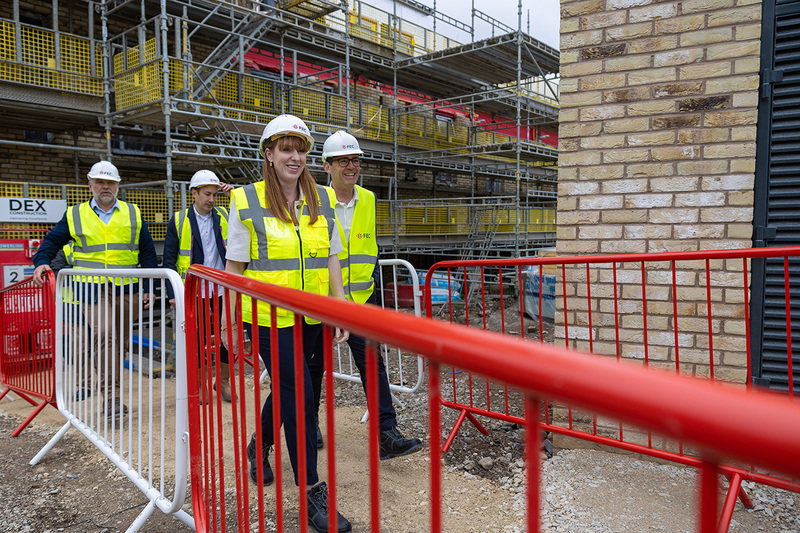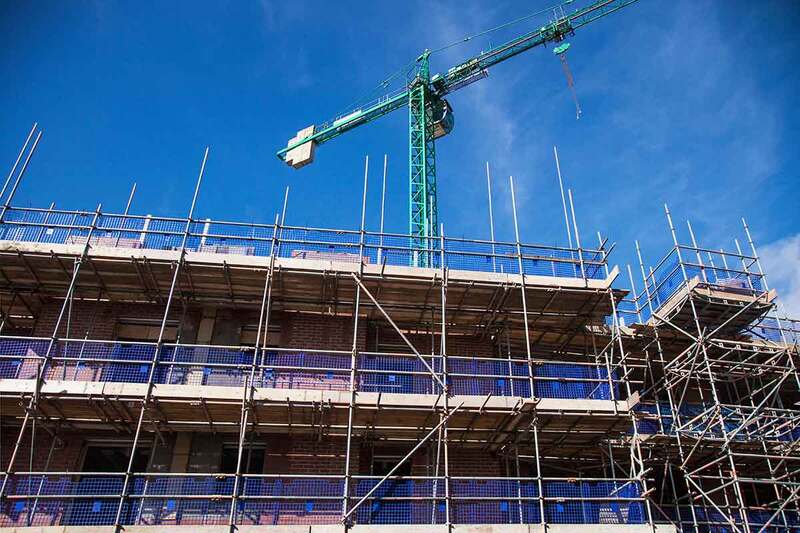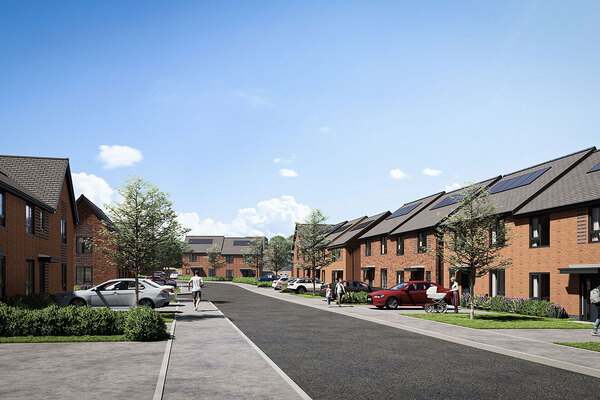You are viewing 1 of your 1 free articles
In detail: what the NPPF changes mean for housing delivery
With the redrafted National Planning Policy Framework out for an eight-week consultation, James Riding and Jenny Messenger analyse the implications of a document that seeks to encourage large-scale housebuilding and reverse many of the previous government’s policies

“Nowhere is decisive reform needed more urgently than in our planning system,” Angela Rayner, the deputy prime minister and housing secretary, declared in her statement announcing the long-awaited redrafting of the National Planning Policy Framework (NPPF).
The revised document comes with tracked changes switched on to show where this draft diverges from the raft of reforms Michael Gove introduced in December 2023 when he was housing secretary. It forms the foundation of Labour’s bid to build 1.5 million new homes during this parliament.
The NPPF is now out for an eight-week consultation on proposals that include reintroducing housing targets for councils, coming up with ‘golden rules’ for the release of green belt land and eliminating all references to beauty.
Many of the alterations aim to reverse changes made by Mr Gove that have been “detrimental to housing supply”, the government says in its consultation document.
Mandatory housing targets
One major reversal of Mr Gove’s amendments is to scrap the “advisory” part of calculating housing need. This had allowed local authorities to potentially deliver fewer houses than the number calculated via the standard method.
Where the NPPF previously stated that “the outcome of the standard method is an advisory starting point for establishing a housing requirement for the area”, this has now been cut entirely and the target is mandatory.
“Those changes run counter to this government’s ambitions on increasing housing supply,” the consultation document says.
Where the previous document included “exceptional circumstances” such as “demographic characteristics” as potential justifications for alternative calculations, lower numbers will now only be allowed if a local planning authority can show “hard constraints”, such as flood risk areas.
They will also need to have exhausted all other options – including “optimising density, sharing need with neighbouring authorities and… reviewing green belt boundaries”, housing minister Matthew Pennycook said in a letter to stakeholders in the sector.
Another small, but crucial, change is the deletion of “as much… as possible” from a sentence on the goal of meeting housing need, which now simply reads: “The overall aim should be to meet an area’s identified housing need.”
New methods
The updated NPPF will introduce a new method for calculating local authority housing targets to match the scale of new homes Labour aspires to build.
The standard method is “insufficient”, Ms Rayner said, relying on “decade-old population projections” and “an arbitrary ‘urban uplift’ that focuses too heavily on London”, as well as lacking “ambition across large parts of the country”.
The overall yearly target is being raised from 300,000 to around 370,000 homes. Under the new measures, every part of England will have to grow its housing stock by 0.8%, set to broadly correspond to the average rate of housing growth.
There is an added ratchet for areas where homes are particularly unaffordable, such as London and the South East. This uplift is based on “how out of step house prices are with local incomes”, calculated using an affordability multiplier of 0.6%.
The capital will be given a new building target of 80,000 homes a year, lower than the goal set by the previous government, but still well above the 35,000 homes delivered in the city last year.
“With a stable number, reflective of local needs and the way housing markets operate, we will stop debates about the right number of homes for which to plan, ensure targets reflect the way towns and cities actually work, and support authorities to get on with plan-making,” Ms Rayner said.
Meeting rental need
Another key change has been a shift away from homeownership and an emphasis on social rent, in line with Labour’s goal to increase the number of social rent homes during 2025-26, its first full financial year in power.
Several specific references to social rent have been included, such as explicit expectations on social rent delivery, and testing whether there is more that could be done to support developments with mainly affordable tenures – again with a focus on social rent.
“Where a need for affordable housing is identified, planning policies should specify the type of affordable housing required (including the minimum proportion of social rent homes required),” the NPPF now reads.
Homes England and the Greater London Authority are also being asked “to maximise the number of social rent homes” when they allocate their remaining funding.
Several requirements for homeownership have been removed, including the demand that at least 10% of the total number of homes in a major development should be available for affordable homeownership.
It also removes the requirement that a minimum of 25% of affordable housing units secured through developer contributions should be First Homes.
Five-year plans
The reforms stress the importance of up-to-date local plans, with Ms Rayner calling attention to the fact that “just a third of plans have been reviewed and updated in the past five years”.
The government understands that plans might be at different stages around the country, but where there is a “significant gap between the plan and the new local housing need figure”, local authorities will have to “immediately” start on a new plan.
The buffer target for the supply of deliverable sites has been increased from 10% to 20% in areas where there has been “significant under-delivery of housing over the previous three years”.
While this overall approach might “delay” plan adoption, Mr Pennycook said in his letter to stakeholders that the government wanted to “balance keeping plans flowing to adoption with making sure they plan for sufficient housing”, adding that Labour will give financial support to affected authorities.
“While I hope the need will not arise, the deputy prime minister will not hesitate to use her powers of intervention should it be necessary to drive progress – including taking over an authority’s plan-making directly,” Mr Pennycook said.
Larger than local
The government is making an effort to encourage “cross-boundary strategic planning” on a “larger-than-local scale”, to make sure local constraints such as national parks and protected habitats do not act as a barrier to development.
This “universal coverage” of planning will eventually be turned into legislation designed to help metro mayors co-ordinate spatial development strategies.
There are plans to consult on and develop these strategies with the sector before the legislation comes in, including making sure there is enough capability with information like geospatial data.
80,000
Target number of homes to be built a year in London
50%
Minimum proportion of homes that must be affordable when part of major developments built on newly released green belt sites
Green belt
The draft NPPF makes it easier and clearer for developers to argue that land should be released from the green belt for building. The document says green belt boundaries should be altered when a council cannot meet its housing need through other means.
Where it is necessary to release green belt land, plans should first consider “previously developed land in sustainable locations”, then grey belt land that is not previously developed, and then “other sustainable green belt locations”.
The document also references Labour’s forthcoming policies on land value capture, saying that land released from the green belt should be bought for the existing use value of the land plus a “reasonable and proportionate premium” for the landowner – ie less than the ‘hope value’ landowners can currently charge. The idea is that capping the price of green belt land will make affordable and social housebuilding on these sites more viable.
Golden rules
Any “major development” on newly released green belt sites must obey what Ms Rayner has called the government’s “golden rules”. The NPPF says these include “at least 50% affordable housing [with an appropriate proportion being social rent], subject to viability”; infrastructure improvements; and new or better public green spaces.
“The objective should be for new residents to be able to access good-quality green spaces within a short walk of their home, whether through on-site provision or through access to offsite spaces,” it adds.
That subject-to-viability clause could prove pivotal, because the development market varies wildly across the country.
A builder could afford to build 50% affordable housing on a greenfield site in London or the South East, but in other parts of the UK, some of those sites just will not come forward with the added demands. We will see if Labour introduces some regional flexibility after the consultation.
Labour’s ‘golden rules’
Homes built on the green belt must include:
- At least 50% affordable housing, subject to viability
- Infrastructure improvements
- New or better public green spaces
Grey belt
There is also a new definition for grey belt: land in the green belt that is previously developed, and any other parcels or areas of green belt land that make “a limited contribution” to green belt purposes. (These are: to stop sprawl; prevent neighbouring towns merging into each other; safeguard the countryside; preserve the character of historic towns; and encourage brownfield regeneration.)
Housing in the green belt, the new document says, “should not be regarded as inappropriate” where the development would use grey belt land in sustainable locations; the golden rules are met; and the development would not “fundamentally undermine” the function of the green belt across the area of the plan as a whole.
Green belt housing is also permitted when the local authority cannot demonstrate a five-year supply of deliverable housing sites, or when it has delivered 75% or less of its housing requirement for the past three years.
Transition period
Labour wants its new housing targets to kick in by the end of the year, but the NPPF includes a short transition period. Local authorities that have already reached the examination stage of their local plans will be able to continue with their current plans.
Those local plans that have been published before examination (a stage known as Regulation 19) will also be accepted as sufficient, as long as their housing target is no more than 200 homes below the new calculation.
As a result, it is hoped that local authorities will press on quickly with their local plans this year to limit the impact of the new targets. For example, a local authority that is facing an uplift of 600 to 700 homes a year under the new housing targets could cut this to a 400-home uplift for the next five years if it progresses its local plan quickly enough.
With grant funding for affordable homes and certainty around rent-setting expected in the Autumn Statement, membership organisations and senior leaders have welcomed the NPPF changes as an “encouraging first step”.
Sign up for our development and finance newsletter
Already have an account? Click here to manage your newsletters











